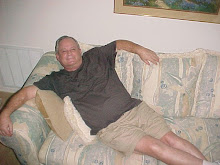The goal of behavioral analysts is to predict market
participant’s emotions (moods) and the intensity with which they will move (control)
market price movements from current market price action. They ignore traditional fundamental analysis
that exposes valuation inefficiencies and mispricing in favor of
the more empirical proof of intention through action displayed directly in
market price movement. Technical analysis is used only to help predict
potential market velocity as opposed to price reversals.
Market reversals are an inevitable result of excessively bullish or bearish
sentiment (greed or fear) and it’s that “emotion” that causes the majority of
traders to enter positions on the same side of a market at roughly the same
point in time—which in turn leads to a price reversal.
Analyst use clues created by today’s emotional responses to greed and fear thresholds,
which is measurable, and through these measurements, tops and bottoms are
tracked as waves of optimism (greed) and pessimism (fear) that drive price; it can
be predicted in repeatable reactions hours, days, weeks, months, years, and
even decades before actual trading takes place.

